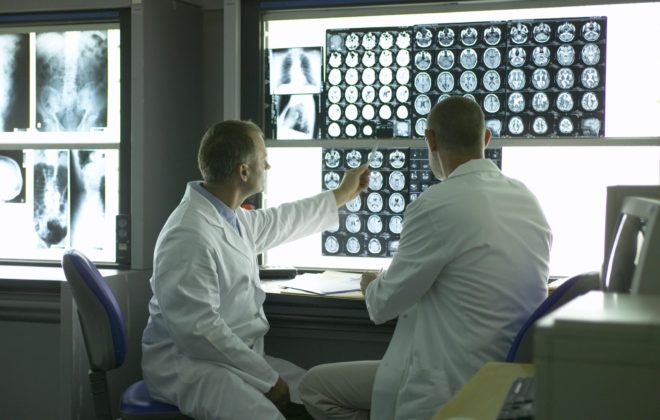What studies have been conducted about biofeedback, neurofeedback and neurotherapy?
Neurofeedback is not a new concept. It has been known since 1929 that the brain emits brainwaves that are indicative of the electrical activity of the brain and that different types of brain waves are emitted depending on what state the individual is in (e.g. attentive and focused, or drowsy and day-dreaming). In 1935 it was discovered that the brain could be voluntarily adjusted, and 40 years later in the 70s scientists and doctors began to learn about the therapeutic potential of brain activity operant-conditioning. Neurofeedback, as we now refer to this treatment, is a type of biofeedback which teaches self-control of brain functions resulting in the ability to change the brain waves that one emits. Despite being utilized in the medical community in Europe for decades, it has been slower to gain popularity in North America.
Due to the alternative nature of the treatment, it has been the subject of the study of researchers for many years with most of the clinical evidence for neurofeedback involving the treatment of ADHD. However there are studies for the effectiveness of neurofeedback in the treatment of other conditions. In fact, neurofeedback has shown positive results in hundreds of patients over the past few decades and there have been over 500 peer-reviewed research articles published on the topic in the past few years alone. The studies below are a small sample of some of the research that has been conducted into the effectiveness of biofeedback—and in particular neurofeedback—for the treatment of various psychological disorders.
Biofeedback and PTSD
- The National Center for Biotechnology Information (NCBI) details the results of four studies examining the clinical effectiveness of biofeedback in patients with PTSD. In three out of four studies, the results showed that the symptoms of PTSD were significantly reduced after 6 to 28 biofeedback therapy sessions of 20-30 minutes each.
- A 2012 study suggests that neurofeedback involving very low frequencies—between 0.02 and 0.2 Hz—results in rapid significant reductions in the severity of PTSD symptoms.
Neurofeedback and Migraines
- In 2015, a Japanese study found that biofeedback therapy reduced the frequency and severity of symptoms in people with migraine headaches.
- The Michigan Headache and Neurological Institute (MHNI) suggest that biofeedback therapy improves symptoms of headache and migraine in 40 to 60 percent of patients, similar to the success rate of certain drugs such as beta blockers (propranolol) for migraine and tricyclic antidepressants (amitriptyline) for tension-type headache.The MHNI proposes that combining biofeedback with medication may provide superior treatment results. When propranolol was added to biofeedback one study found a significant increase in effectiveness (79%) vs. biofeedback alone (54%).
Neurotherapy and ADHD
As already mentioned, the majority of studies into the effectiveness of neurofeedback concentrate on the treatment of the symptoms of ADHD.
- A 2014 report combined data from multiple studies that all sought to determine whether electroencephalogram-neurofeedback (EEG-NF) significantly improves the overall symptoms, inattention and hyperactivity/impulsivity associated with ADHD. This ‘meta-analysis’ (an analysis of multiple studies in which the treatment effect was consistent between all the studies), documented how EEG neurofeedback improves symptoms of inattention for children with ADHD.
- In further 2014 study it was determined that EEG neurofeedback was more effective than cognitive behavioral therapy for reducing ADHD symptoms.
- In a 2002 study at the FPI Attention Disorders Clinic in New York it was shown that neurofeedback training as a therapy for ADHD may be even more effective than the drugs Methylphenidate or Ritalin used to treat this disorder. In the study of 100 children who had been diagnosed with ADHD and were taking Ritalin, approximately half participated in neurofeedback training. The results were that the children who participated in neurofeedback training in addition to taking Ritalin showed greater improvements in focus and a significant decrease in hyperactive/impulsive behavior. Interestingly, only the children who underwent neurofeedback training showed potential for long-term changes in patterns of brain activity associated with increased focus. ADHD children under medication commonly suffer from mild side effects such as loss of appetite and sleep disturbance, and while serious adverse events are rare, the side effects are all but non-existent with neurofeedback alone. The results have been found to last anywhere from six months to two years after the last treatment session.
These studies suggest that there may be a bright future for neurofeedback training in the treatment of certain psychiatric disorders, and while approximately 10,000 children are currently receiving neurofeedback treatments in the U.S. (with seventy-five to 80 percent of them having some type of attention deficit condition), it’s yet to become a mainstream treatment in the US like it in Europe. Why is this, given such positive research?
Newsweek reports that Robert Longo, a North Carolina counselor on the board of directors for the International Society for Neurofeedback and Research, stated in 2016 “The pharmaceutical companies don’t like us because it gets people off of drugs. But there’s a growing amount of literature and research, and in the next five or 10 years you’re going to see a lot of support when we say we can treat things like traumatic brain injuries, anxiety, depression, ADHD, insomnia, migraine headaches and people who have had strokes.”
While the research is there to support neurofeedback as a viable treatment option for various conditions, one of the caveats of many of the studies is that, more often than not, when a clinical trial take place to test the results of neurofeedback training it’s considered more ethical to let patients (or parents of a child) choose which treatment group they prefer, and therefore it’s possible that the treatment groups may not be composed of comparable subject populations, in turn skewing the results of the study. In other words, the studies are not always comparing apples to apples.
As mental health becomes more important and less of a taboo subject, these types of studies are only going to increase to further discover and promote the positive results from neurofeedback as a way to help people not only learn mindfulness and brain-control more quickly, but also to get their life back.
For an effective, proven, drug-free solution to neurological conditions using neurotherapy please contact us for a free consultation to see how we can help you or those you care about.




